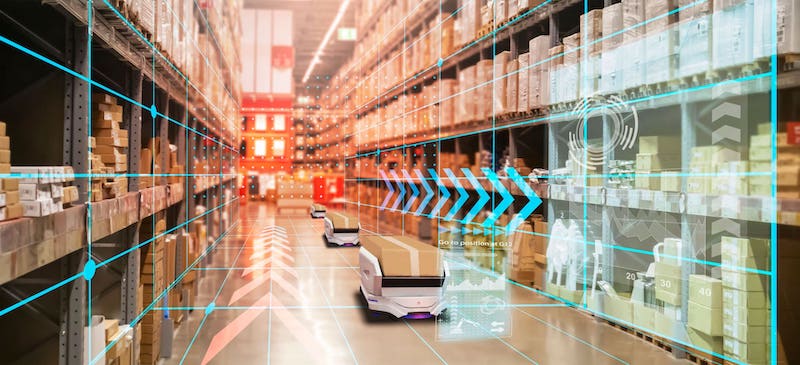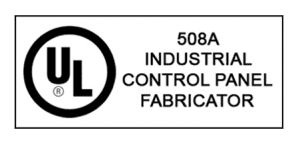From science fiction to reality, the increasing popularity of robotic systems in a multitude of factory based industries has helped to reshape the commercial landscape. As the technology of these systems continues to advance, the costs of integration become more affordable, and the capabilities continue to expand. What once was unavailable to many companies is now a reality that leaves production departments and corporate decision makers with the task of not deciding when to integrate these robotic systems into their production factories, but how to design the integration to meet their needs.
The Current State of Robotics in Warehouse Design
Over the last few decades, robotic systems have become increasingly popular in manufacturing and storage warehouses to help companies work more efficiently and to refocus the human labor force away from jobs that could cause potential harm and monotony that could cause high turnover rates. The use of robotics allows materials to be handled automatically while reducing errors and creating more consistency in design. For many companies, the thought of integrating these systems causes financial worry at the cost of integrating the technology; however, costs have continued to fall while helping to increase profits in the long term.
Integrating robotics into your warehouse has also become easier over the years, with a greater workforce available to both install and program, and maintain your new systems. The educational landscape is changing and integrating more opportunities for students to learn programming and engineering, creating an increase in robotic engineers to keep these systems operating and working in the way that you need.
The Role of Warehouse Robotic Systems in Modern Warehouse Operations
Robotics has changed the way warehouses can function regardless of the processes they will be tasked to complete. Because of the flexibility of robotic systems in performing both low and high volume tasks, not only can a robot handle large, repetitive tasks, but with minor programming changes, it can also easily handle low volume, niche processes as well. This creates a versatile system that allows both large and small operations to benefit from their usage.
When it comes to performing their intended tasks, robots allow factories to complete more complex and highly variable tasks in a shorter amount of time than if completed by human labor. This allows not only for more opportunities to expand product lines but also creates a system in which quality can be more consistent.
Robotic systems have not completely replaced your human workforce, which allows factories to continue to provide valuable employment for many individuals responsible for supporting their families. These systems have been designed to work in conjunction with your employees. Through integrated safety features, employees and employers can work with minimized risks for workplace accidents and injuries. With robots taking on the task of monotonous and boring repetitive operations, your employees are free to utilize their skills and knowledge in ways that continue to advance the operations and impact of your company.
An Introduction to the MiR Robot and Its Capabilities
One of the robotic systems that is helping to revolutionize robotics in warehouse operations is the AGV MiR 1000. The Mobile Industrial Robot safely navigates your warehouse space with complete automation to improve transportation and logistics operations. When your warehouse has products to move or trucks to load, this little robot delivers a big performance in safely moving products and materials throughout your warehouse. Its intentional design is made to withstand the wear and tear of warehouse work as well as plan for the hustle and bustle of the environment. Complete with laser guides and integrated safety features, it can easily maneuver itself around objects, stop when something crosses its path, and is damage resistant to falling objects.
As part of a full line of MiR products, it can easily integrate with other elements of your system that improve your warehouse capabilities.
The Future Trends of Robotics in Warehouse Design
If the past is any indication of the future, robotic systems will continue to improve the ways in which work in your warehouse functions. As robotics continue to develop, so do the opportunities available for warehouse operators to expand their own companies. Future trends indicate an increase in modular style robotic systems that allow for a variety of operations that can truly customize the needs of any warehouse.
Other advancements in robotic technologies include:
- Mobile robots. These bots are designed to replace extensive and large conveyors, which can free up additional space in your warehouse for other needs.
- Cobots. Short for collaborative robots, these are intended to work in collaboration with human employees, easing the burdens of their job.
- Drones. Drones are becoming a more versatile robotic system that continues to reveal multiple different ways to utilize small but effective technologies. For warehouses, there are continued developments in safety, operation without GPS, and the ability to scale the number needed to accomplish the task.
Not all robotic operations will happen with a machine; technology improvements continue to develop in the computer systems that keep machines functioning which can allow more user friendly interactions both in person and online with your customer base. These computer systems also allow for better wireless tracking of your fleet and other connected logistical operations. The computer technologies that are integrated with these systems create cloud-based management that will allow you to pinpoint production or supply difficulties that allow you to pivot quickly.
How Precision Warehouse Design Can Assist Businesses in Robotic Systems Implementation
Making the decision to take your warehouse operations to the next level can be difficult, with worries about costs, training, and maintenance. However, when you work with Precision Warehouse Design, our team can help you integrate new technology that will improve your overall operations. Whether you are interested in learning more about the MiR 1000, one of the leading solutions in warehouse robotics, or exploring our range of warehouse robotic systems, our team can help customize your warehouse design to increase function and safety to improve production and lower costs.
Our team has an extensive history of helping companies of all sizes continue to modernize their warehouse operations. From FedEx to Chewy.com and many more, we help design and implement robotic systems that are right for you. Contact us today and speak with one of our team members.
FAQs
What are warehouse robotic systems and how are they improving warehouse operations?
Warehouse robotic systems are automated machines designed to perform various tasks within a warehouse environment, such as picking and packing, sorting, and transporting goods. They are revolutionizing warehouse operations by increasing efficiency, reducing errors, allowing for round-the-clock operations, and improving overall operational productivity.
What is a MiR Robot and what role does it play in the future of warehouse design?
A MiR Robot, or Mobile Industrial Robot, is an autonomous mobile robot designed to optimize productivity in logistics and manufacturing operations. It can navigate autonomously, avoid obstacles, and carry out transport tasks. Future trends in warehouse robotics include increased automation, the use of AI and machine learning, and the development of more versatile robots like the MiR Robot.
How can a business implement warehouse robotic systems and are they cost-effective?
Businesses can implement warehouse robotic systems by partnering with a warehouse design and equipment provider like Precision Warehouse Design. They provide consultation, design services, equipment procurement, and implementation support. While the initial investment can be high, warehouse robotic systems are generally cost-effective in the long run due to significant savings in labor costs, reduced errors, and increased operational efficiency.




